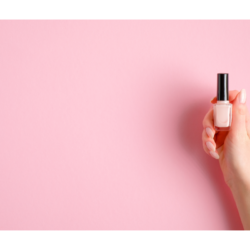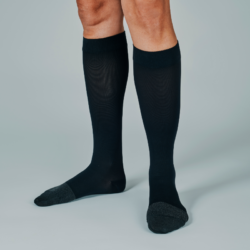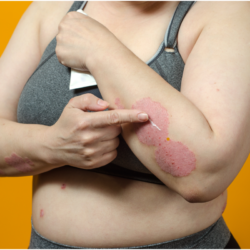Intertrigo is an inflammation of the skin that occurs in the folds of the skin, a condition that affects a large number of people throughout the world. How can it be prevented? What are the best methods treatment methods? Faced with these questions, many people feel overwhelmed. Why does this condition exist? Who is at risk? Let’s take a detailed look at what intertrigo is, its diagnosis, symptoms, treatment and, above all, how to prevent this skin condition.
This guide is aimed not only at healthcare professionals but also at anyone who wants to understand intertrigo in a more technical and precise way. We will look at the science behind intertrigo, its pathological mechanisms, risk factors and how it can not only be treated but also prevented.
What is intertrigo?
Intertrigo is an irritation often found in areas where the skin rubs against itself, such as the armpits, inguinal folds, spaces between fingers and toes, and under the breasts. This problem can be both uncomfortable and unsightly, but what exactly causes this condition?
Irritation usually results from a combination of friction, moisture and heat. When the skin is in constant contact with itself, this can create an environment conducive to irritation and infection. Perspiration and moisture can build up, creating a favourable environment for the growth of bacteria and fungi.
But who is most likely to develop intertrigo? Obese people, those who sweat excessively, diabetics and even infants may be more prone to this condition. What’s more, certain factors such as wearing tight clothing or neglecting hygiene measures can aggravate the problem.
So how do you recognise it? Symptoms of intertrigo include redness, itching, burning and cracking of the skin. In more serious cases, there may also be a bad smell or discharge.
Understanding what intertrigo is, how it looks and its underlying causes is the first essential step towards prevention and treatment. In the following sections, we’ll take a deeper dive into how to diagnose this condition, preventative measures, and the treatment options available.
How to identify the symptoms of intertrigo?
Identifying the symptoms of intertrigo is crucial for rapid diagnosis and effective treatment. Symptoms can vary in intensity and appearance, and often include the following:
- Redness: Affected areas may become red and inflamed. This may be most obvious in skin folds and areas prone to friction.
- Itching: A persistent itching sensation may accompany the redness, causing discomfort.
- Burning sensation: This sensation may be more intense after showering or exercise, when the skin is even more sensitive.
- Fungal and bacterial infections: In some cases, humidity and heat can create a favourable environment for the growth of fungi and bacteria, leading to secondary infections.
- Odour and discharge: In more severe cases, an unpleasant odour and discharge can signal a more serious infection.
Understanding these signs is the first step in avoiding further complications. Professional diagnosis may be necessary if symptoms persist or worsen.
How can intertrigo be prevented?
Preventing intertrigo is a multifaceted process that requires constant attention to detail. A combination of hygiene measures, skin care, and appropriate clothing choices can help. Here are some specific tips:
- Keep Skin Dry: Use clean, dry towels after showering and carefully dry areas prone to intertrigo. Using a low temperature hairdryer can also help.
- Choose breathable clothing: Avoid non-breathable fabrics and choose loose-fitting clothing made from natural materials such as cotton. Avoid tight-fitting clothes that can increase friction.
- Apply anti-fungal creams: If you are prone to intertrigo, the preventive use of anti-fungal creams can be beneficial. Always consult a healthcare professional for specific recommendations.
- Maintain Regular Hygiene: A routine of gentle cleansing with a mild soap and regular application of moisturisers can prevent irritation.
- Control Sweating: Use an antiperspirant and avoid activities that increase sweating in at-risk areas.
- Monitor and Manage Related Health Conditions: People with diabetes or obesity should be particularly vigilant and follow an appropriate skin care regime.
By adopting these measures, it is possible to considerably reduce the risk of developing intertrigo. Prevention is often easier and cheaper than treatment, so being proactive in these habits can make a significant difference.
What treatments are available for intertrigo?
When faced with a diagnosis of intertrigo, it’s essential to understand the different treatment options available. The appropriate treatment will depend on the underlying cause, severity and individual factors. Here’s a breakdown of typical treatments:
- Antifungal creams: If a fungal infection is identified, antifungal creams may be prescribed. These creams specifically target the fungi responsible and help to eliminate the infection.
- Antibiotics: If a bacterial infection develops in the areas affected by the intertrigo, antibiotics may be required. This may be in the form of a topical cream or oral medication, depending on the severity of the infection.
- Steroid creams: To reduce inflammation and irritation, low-dose steroid creams can be used. These creams can help reduce redness and swelling.
- Improved Hygiene Measures: Regular cleansing with mild soap, followed by thorough drying of the affected area, can help healing. Moisturising with a fragrance-free cream can also promote healing.
- Lifestyle and Clothing Modifications: Wearing loose, breathable clothing, maintaining proper hygiene, and avoiding factors that aggravate intertrigo can be an important part of treatment.
- Specialist Medical Care: In severe or persistent cases, a dermatologist or other specialist may be required to assess and treat the condition.
- Education and Self-Monitoring: Learning to recognise the signs and symptoms of intertrigo and implementing preventative measures can prevent recurrences.
It is important to note that treatment should be guided by a healthcare professional who has assessed the specific condition. Self-treatment without consultation can aggravate the problem or lead to further complications. An accurate diagnosis is essential for choosing the right treatment.
If in doubt, always consult a healthcare professional, such as a GP or dermatologist. They can assess your symptoms and carry out a physical examination. If necessary, order further tests to determine the most appropriate treatment.
Treating intertrigo is not always straightforward and may require a combination of approaches. The key to success often lies in early diagnosis, appropriate treatment and ongoing prevention.
Is there a link between candidiasis and intertrigo?
Candidiasis is a fungal infection caused by the Candida genus of fungi. This infection can occur in different parts of the body one of the most common manifestations of candidiasis is intertrigo.
How does it happen?
- Favourable place to grow: The folds of skin where intertrigo is most likely to develop also provide an ideal environment for Candida to grow. These areas can be warm and moist, conditions that Candida finds favourable.
- Secondary infection: Intertrigo often starts as a simple irritation caused by friction. If this area becomes infected with Candida, it can worsen the condition, leading to skin candidiasis in the affected area.
- Similar symptoms: The redness, swelling and itching associated with intertrigo can be exacerbated by a Candida infection, making the symptoms more pronounced and uncomfortable.
- Combination treatment: In cases where intertrigo is associated with candidiasis, treatment may require a combination of approaches. This may include specific antifungal creams to target Candida in addition to the usual measures to treat intertrigo.
Intertrigo and candidiasis are two distinct conditions, but they are often linked, as candidiasis can be both a cause and a complication of intertrigo. Understanding this relationship can be essential for correct diagnosis and treatment, underlining the importance of professional assessment by a doctor or dermatologist.





